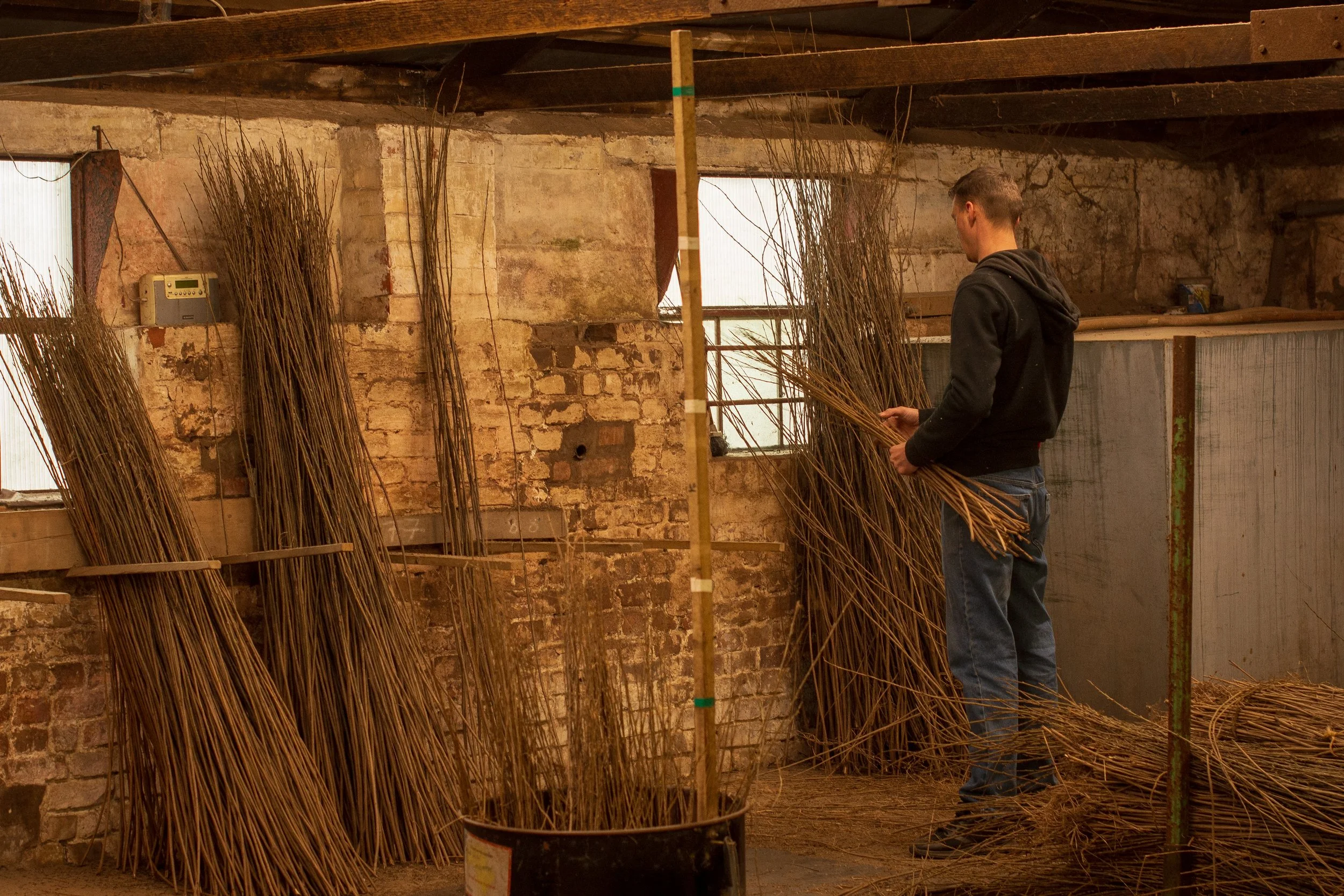Woven Into Our Journey
As basketmakers, we have a deep respect for willow, the plant that has been central to our craft for over 65 years. Willow is also a large part of Somerset’s heritage, with the Somerset Levels at the heart of the UK’s willow industry since the early 19th century.
From age 11, Darrell, 3rd generation of the company, would help his father collect willow from eight local growers across the Levels. As demand for willow products declined, the number of growers dwindled. In 2007, Darrell and his friend Richard founded their own willow-growing business, Somerset Willow Growers, our sister company. Somerset Willow Growers now supplies the majority of the willow we use in our baskets, as well as schools, hobbyists, basketmakers, local councils and artists.
How Willow is Grown
Somerset Willow Growers now cultivates and maintains over 50 acres of willow beds across the Somerset Levels. As an annual crop, they regenerate to their full height within a year of harvesting and only need replanting every 40-50 years. Harvesting typically starts in late November and runs through March, using a specialised tracked harvesting machine to cut the withies. Despite this mechanisation, the process remains labour-intensive, with bundles hand-gathered and loaded onto trailers to be transported back to the farm.
Withies are then hand-sorted by length and checked for quality. The length of the willow determines its use, with longer withies typically being thicker and shorter withies being finer. For our Somerset Willow Coffins, we use 6–8-foot withies. Once sorted, the withies are ready for the processing stage.
Willow has various finishes available. A traditional buff finish is achieved by boiling withies for eight hours, releasing natural tannins from the outer bark to reach a rich red-brown colour. White willow stands in water until April to keep it alive until the sap rises and new leaves sprout. The bark is then peeled away to reveal the white inner wood.
To strip the willow, it is fed through rapidly revolving brakes that catch and strip away the bark. The withies are then left out to dry naturally in the sun before bundling for weaving.
About the Plant
With over 400 varieties of willow, we use Black Maul and Whissender for their flexibility and ease of use in weaving. Most willow varieties thrive in moist soil and require more water than most conventional crops, making it well-suited to low-lying areas.
As well as its craftsmanship potential, willow has long been valued for its medicinal properties. Its bark contains salicin, a natural pain reliever similar to aspirin. Recent research from Rothamsted and the University of Kent has identified a compound in some varieties that can kill cancer cells, offering hope against neuroblastoma, a childhood cancer.
Environmental Benefits
Willow is a highly renewable crop that regenerates quickly after harvesting, making it a popular choice for biomass energy. It is also a carbon-negative plant, absorbing more CO₂ than it releases by trapping it in the soil during its growth.
Furthermore, willow plays a vital role in many natural engineering solutions, such as:
With its unique environmental benefits, willow not only supports sustainable industries but also plays a crucial role in protecting and restoring natural landscapes.
Willow has been integral to our craft for generations, deeply rooted in both our history and the landscape of the Somerset Levels. From its careful cultivation to the skilled hands that weave it into timeless baskets, this remarkable plant is woven into our journey and continues to shape what we do.









